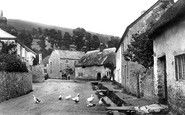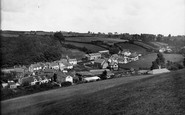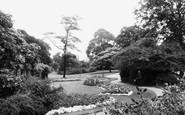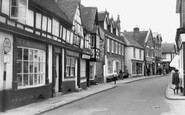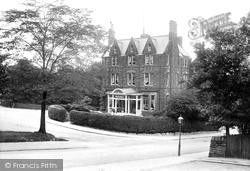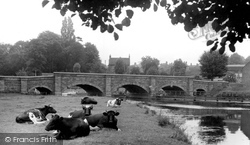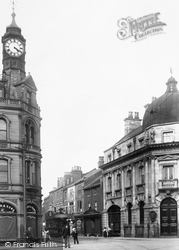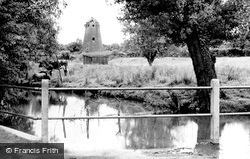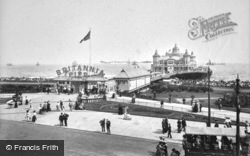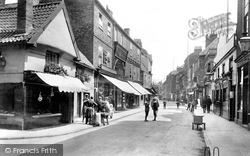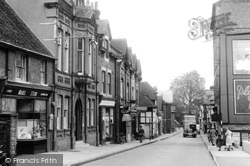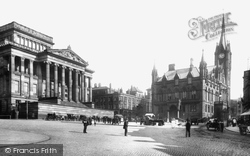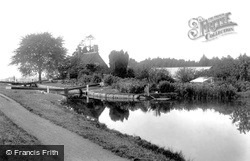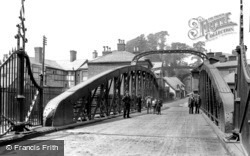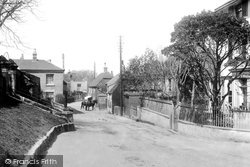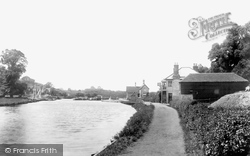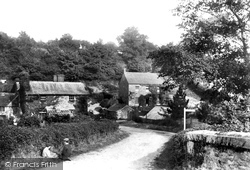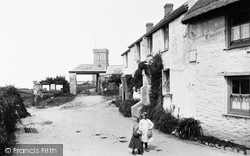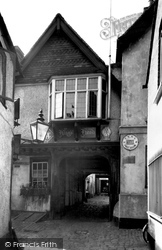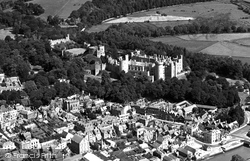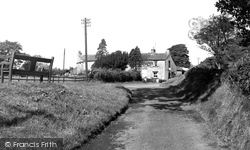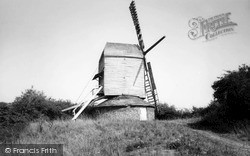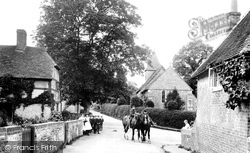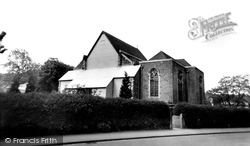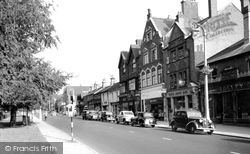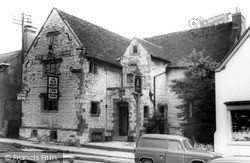Places
36 places found.
Those places high-lighted have photos. All locations may have maps, books and memories.
- Bangor, County Down
- Newcastle, County Down
- Greyabbey, County Down
- Donaghadee, County Down
- Downpatrick, County Down
- Portaferry, County Down
- Dromore, County Down
- Hillsborough, County Down
- Downings, Republic of Ireland
- Killyleagh, County Down
- Ardglass, County Down
- Rostrevor, County Down
- Dundrum, County Down
- Newtownards, County Down
- Warrenpoint, County Down
- Ballygowan, County Down
- Ballywalter, County Down
- Ballyward, County Down
- Bishops Court, County Down
- Boardmills, County Down
- Culcavy, County Down
- Katesbridge, County Down
- Killough, County Down
- Millisle, County Down
- Portavogie, County Down
- Saul, County Down
- Seaforde, County Down
- The Diamond, County Down
- Audleystown, County Down
- Kearney, County Down
- Annaclone, County Down
- Ballyhalbert, County Down
- Ballymartin, County Down
- Clare, County Down
- Conlig, County Down
- Dollingstown, County Down
Photos
856 photos found. Showing results 1,301 to 856.
Maps
459 maps found.
Books
2 books found. Showing results 1,561 to 2.
Memories
8,167 memories found. Showing results 651 to 660.
Childhood In Benham Valence
It was in April 1950 that I was born in the Victorian wing of Benham Valence - actually in the flat above the garages - a very primitive dwelling with no bathroom or indoor toilet. Unfortunately the whole wing was ...Read more
A memory of Benham Park in 1950 by
The Keelings 1940 Evacuees
My sister, Joy, elder brother, Richard and myself, John Keeling, were evacuated to Llanharan in June 1940. After a short time Richard and myself were placed with a lovely old lady at 12 Seymour Avenue, Mrs Surridge. I ...Read more
A memory of Llanharan in 1940 by
The Ship Inn At Axmouth.
The Ship Inn can be seen to the left of the photograph; just beyond the wall. My great-great-grandparents, John and Mary Real (born in Axmouth in 1821 and 1824 respectively) were licensees of The Ship Inn, Axmouth, at the ...Read more
A memory of Axmouth in 1960 by
The War Years
During the war my brother, my three cousins and myself stayed on a farm, I think it was in Roadwater or Watchett, it was called Stamborough or something like that. My Great Aunt and Uncle Tom and Cassie Carpenter lived in a cottage ...Read more
A memory of Roadwater in 1940 by
Mendleson Wrote His Spring Song In The House.
With Denmark Hill and about level with the Old Henly's garage behind you was a house within the ruins with a metal sign. It stated that during his stay here, Mendleson wrote his 'Spring Song' here. ...Read more
A memory of Camberwell by
Ratfyn Power Station
In the 1950s I was in the Royal Engineers and came over from Germany to our school of military engineering at Chatham where we did a course in electrical power stations. We were then posted to Bulford barracks, and did our ...Read more
A memory of Bulford in 1954 by
Remembering Byfleet
I was born in Byfleet in 1950. We lived in Binfield Road. Later I moved to the hotel that was built where the village green is now. My mother Beatrice Stenning was the housekeeper, cook, maid and everything in between. My dad ...Read more
A memory of Byfleet by
West Street Shops
Shops on West Street in the 1960s were left to right: Merritts the butcher next door to Blackiston the butcher, famous for the specialty sausages, also had its own slaughterhouse and in the back garden an Anderson shelter used ...Read more
A memory of Midhurst in 1960 by
Boyhood Memories
As a child I lived in a lovely house called Glanafon next to the old County Stores bakery in St Clears with my mother Anglea and step-dad Malcolm, and my 2 sisters, Rosemarie and Teresa. Unfortunately Teresa passed away over 20 ...Read more
A memory of St Clears in 1976 by
Pride Of The Valley
I used to camp as a child and teenager at Crosswater down the road [my father knew the then owner] and one of my memories is of driving past the hotel en-route from Farnham. I stayed here as a birthday treat in 2003 and went on ...Read more
A memory of Churt in 2005 by
Captions
2,242 captions found. Showing results 1,561 to 1,584.
It was built on the site of Mother Downes' charming thatched cottage in 1870 and was much enlarged twenty years later.
The cows are lying down, a sure sign of rain, the old saying goes, but whether this is true or false they add a picturesque finishing touch to a watery scene.
It was down Baxtergate that Freeman, Hardy and Willis had their branch. Coal mining was a major employer: Doncaster was ringed with pit villages.
Here we see the brick tower mill, with a replacement roof in place of a cap, in a stripped-down and derelict condition. The photograph was taken from a nearby watermill site.
The new Britannia Pier opened in 1901 with a temporary pavilion, which was pulled down to make way for a permanent pavilion a year later. It fell victim to fire in 1909, though it was replaced.
The butcher's shop is interesting in that it is open on two sides; the butcher either cuts his meat in the street, or he has brought the block out to swill it down.
In direct contrast to the Pavilion by James Tate in Abbey Park, here is a brick and render symmetrical watered-down vision of the future as seen through the eyes of the Council of the early 1960s in
Architecturally it also descends from the heights of the High Street, except for the timber-framed building on the left half way down.
The Town Hall, designed by Sir Gilbert Scott, was started in 1862. It burnt down in 1947, and after much debate, the ruins were cleared away in the early 1960s.
From there, the Kennet & Avon Canal plunges down the extraordinary flight of 29 locks at Caen Hill to the valley below.
An impressive modern commercial waterway, the Weaver acts a a funnel for industrial products from Cheshire, carrying them down to Weston Point Docks, where there is a link with the Manchester Ship Canal
This little village stands on the edge of a cove in the chalk cliffs of South Foreland, where the road drops steeply down to St Margaret's Bay; it clusters around an impressive Norman church, built around
Along this stretch of the river, the tan-sailed barges carrying cargoes of paper and timber, and the 'stumpies', or narrow boats, used to convey bricks from the kilns down river, were once a familiar
This hamlet down in the East Looe river valley a mile from Liskeard was once a small centre of industry.
This is at the end of the village, where a track leads down to a passenger ferry across the Gannel to the Pentire district of Newquay.
Here the photographer looks down the alley from Market Square to the entrance bay; the oriel window was added by George Devey for the Rothschilds in the 1870s.
A few miles from Dunstable, through the Downs, and nowadays part of the commuter belt, Castle Hill road links the three ends of Totternhoe, Church, Middle and Lower.
Like Lewes, Arundel was established by a Norman baron, this time Roger de Montgomery, to guard a river gap in the South Downs, in this case the Arun.
The Roman bridge can be found down a footpath near the post office, and Fairy Bridge is north of the Red Pump Inn.
The mill was owned by the Elmer family until 1953, when it ceased working. In 1963 it was blown down in high winds, only hours before it was to be dismantled to repair Holton mill.
While West Clandon with its railway station definitely has the air of a commuter village, East Clandon, facing the slope of the North Downs and surrounded by fields, still has a rural feel
In 1964 it was discovered that the foundations were defective and a complete re- building, with foundations taken down to solid chalk, was implemented.
Next to the Trustee Savings Bank is an alley, down which I used to go to school. It led into Obelisk Street. Tolley, the first shop, used to produce their own soft drinks on the premises.
insists that it owes its name to an unlikely incident after the Battle of Edgehill in 1642, when Charles I is said to have come here and demanded that the local gentry donate silverware to be melted down
Places (198)
Photos (856)
Memories (8167)
Books (2)
Maps (459)

